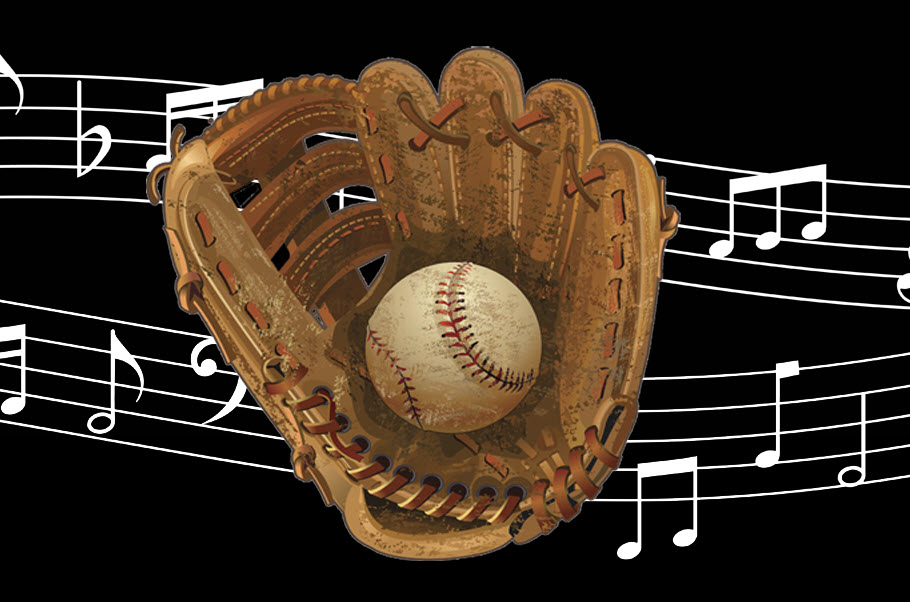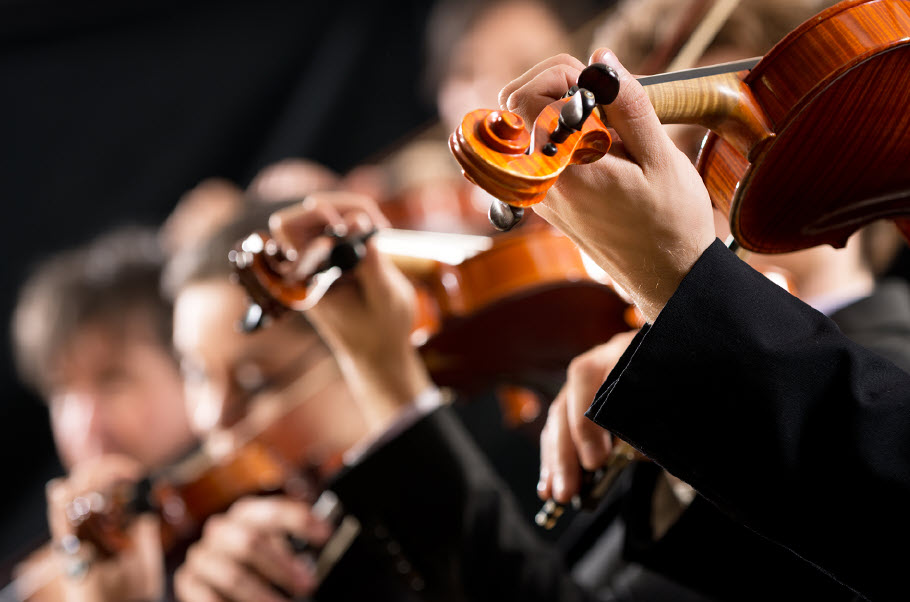What Is Dynamic Range, and Why Does it Matter?
Learn more about one of the essential ingredients of both music and audio gear.
Every piece of music has a certain dynamic range, meaning the difference between the loudest and softest passages. Audio gear also has a distinctive dynamic range, though in this case the term describes the boundaries of what that piece of equipment is capable of producing.
In this article, we’ll explore the concept in detail and also explain why dynamic range is so important to the enjoyment of listening to recorded music.
Impacts
Dynamics are one of the essential ingredients — along with things like melody, harmony and rhythm — that make music pleasurable and compelling to listen to. A song that provides noticeable variations in level is almost always more engaging than one that stays pretty much the same from start to finish.
But if a song has too wide a dynamic range, you won’t hear the quiet parts clearly without the loud parts being uncomfortably loud. Conversely, if the difference between loud and soft is too small, the music will sound squashed and might even be fatiguing to your ears, particularly when listened to at high levels.
Just as a painter or photographer contrasts light and shade, a musical artist, songwriter or producer crafts arrangements that vary in volume and intensity to create drama. The variations can be subtle, like an increase in instrumentation on the second verse, or they can be more obvious, like a breakdown section (where most of the instruments drop out) after a loud chorus.
On a more granular level, dynamics are a big part of musical and vocal technique. For example, when a drummer plays a roll, they’re not hitting every beat at the same volume. If they did, it would sound like a machine gun, not a drum. The variations in dynamics between each beat are what give the roll its feeling and musicality. In a similar fashion, singers typically go from louder to softer from section to section or even word by word.
The Technicalities
The dynamic range of any recording is defined as the ratio of the loudest peak to the quietest, expressed in decibels (dB). For context, the human auditory system has a dynamic range of about 90 dB; a person with healthy hearing can perceive everything from a whisper (roughly 30 dB) to a jet taking off (120 dB). Note that the decibel scale is logarithmic, not linear, so the difference between 30 dB and 120 dB is even more significant than it looks.
Playback media have dynamic ranges too. For example, the dynamic range of a 16-bit / 44.1 kHz CD is over 90 dB — slightly greater than the range of human hearing. 24-bit digital audio has a theoretical dynamic range of 144 dB, but no playback system can equal that … nor would you want it to, considering that 120 dB SPL is the threshold of pain!
Audio gear that reproduces music also has a dynamic range. For equipment such as receivers, speakers and headphones, this is calculated as the ratio between the loudest sound that a unit can produce and the quietest one before noise becomes audible (the “noise floor”). The greater its dynamic range, the more headroom the component will have. Headroom is the range above the average operating level before distortion.
Digital audio has an absolute limit of 0 dBFS (decibels full scale). You can think of 0 dBFS as an impenetrable ceiling; turning up the volume squashes the signal up against it, producing unpleasant digital distortion that you’ll hear once it’s converted back to analog for playback.
Calculating distortion in an analog component is not nearly as precise. That’s because if the signal is overloading the circuit, it doesn’t necessarily worsen the sound quality, as it does with digital audio. In fact, analog audio often sounds better when it’s slightly overloaded and creating saturation. Eventually, if you keep pushing up the volume, it will distort enough to degrade the sound, but where that point may be is a matter of opinion.
When it comes to audio gear specs, dynamic range (DNR for short) is often confused with Signal-to-Noise Ratio (SNR). Although the two are similar, they don’t get calculated the same way. As we said, DNR measures the ratio between the loudest possible peak without distortion and the quietest one before noise (typically hum or hiss) is audible. SNR instead computes the difference between the standard operating level of the unit and the noise floor. With both specifications, the higher the number, the better.
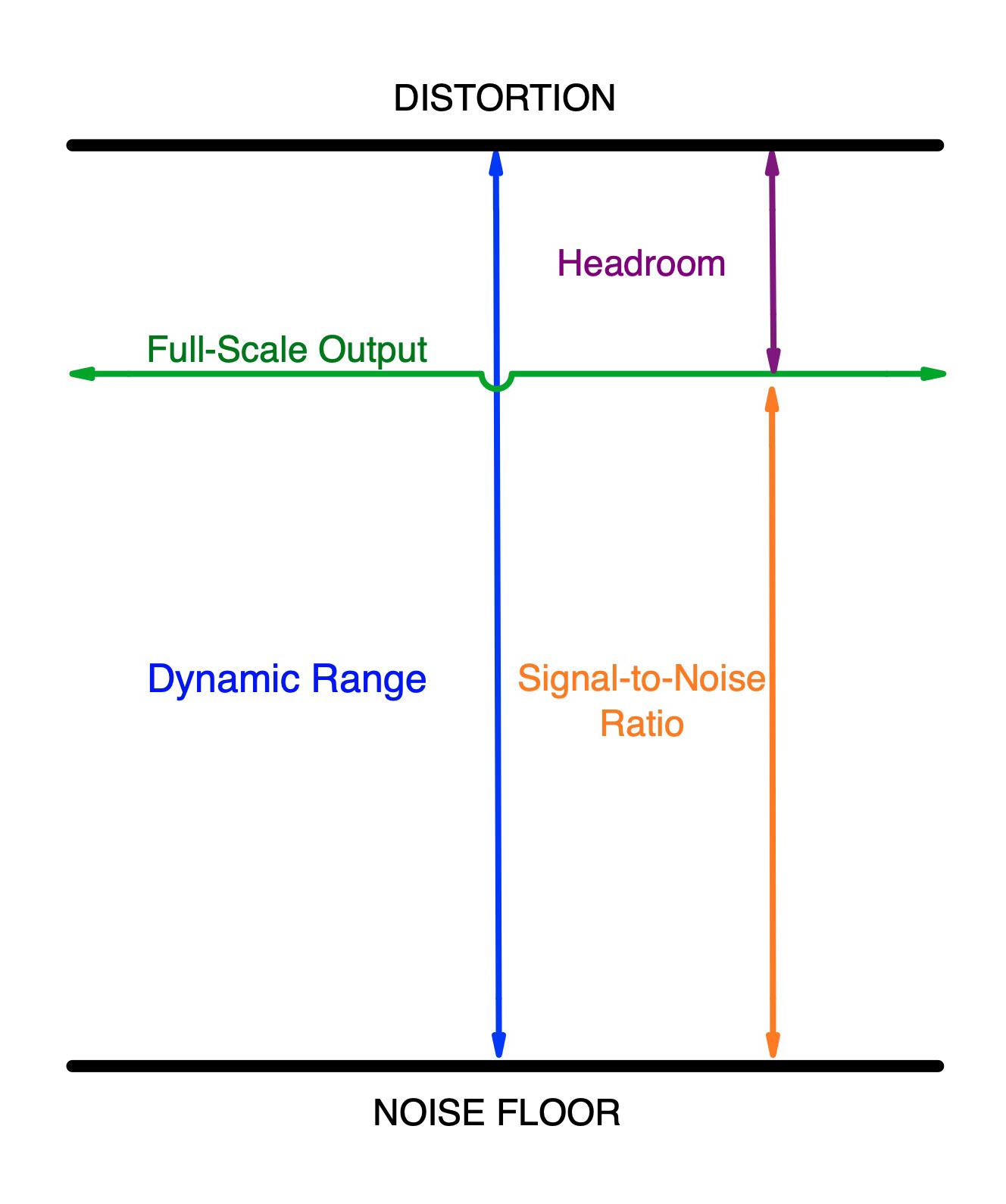
Dynamic Range and Musical Genre
All music has some degree of level fluctuation, but some genres tend to have broader dynamic ranges than others. Recorded pop, rock, R&B, hip-hop and country music usually have a relatively modest dynamic range — typically around 10 dB, although there are exceptions. Electronic dance music (EDM) probably has the smallest dynamic range — often in the 6 dB neighborhood — but makes up for it by creating contrast with its almost infinite array of instrument colors and textures coming from synthesizers and samplers.
On the other end of the spectrum are jazz and classical music, which can have considerably large differences between their quietest and loudest parts. In jazz, uptempo songs typically go from loud passages played on brass and saxophone instruments to quiet piano and bass solos. Even in jazz ballads, the dynamic range is usually relatively wide. A study of dynamic range in different musical styles conducted in 2016 revealed that dynamic ranges in jazz generally varied from 13 dB to 23 dB.
As a group, classical recordings have the widest dynamic range of any genre. The same study cited above found that recorded classical music typically offers between about 20 dB and 32 dB of dynamic range. While that might seem like a lot, it’s still quite a bit smaller than that of a live symphony orchestra performance, which can be as large as 90 dB.
No matter what kind of music you gravitate towards, using high-quality audio components such as a Yamaha AVENTAGE receiver will help you to fully experience the dynamic range of the recordings you love.
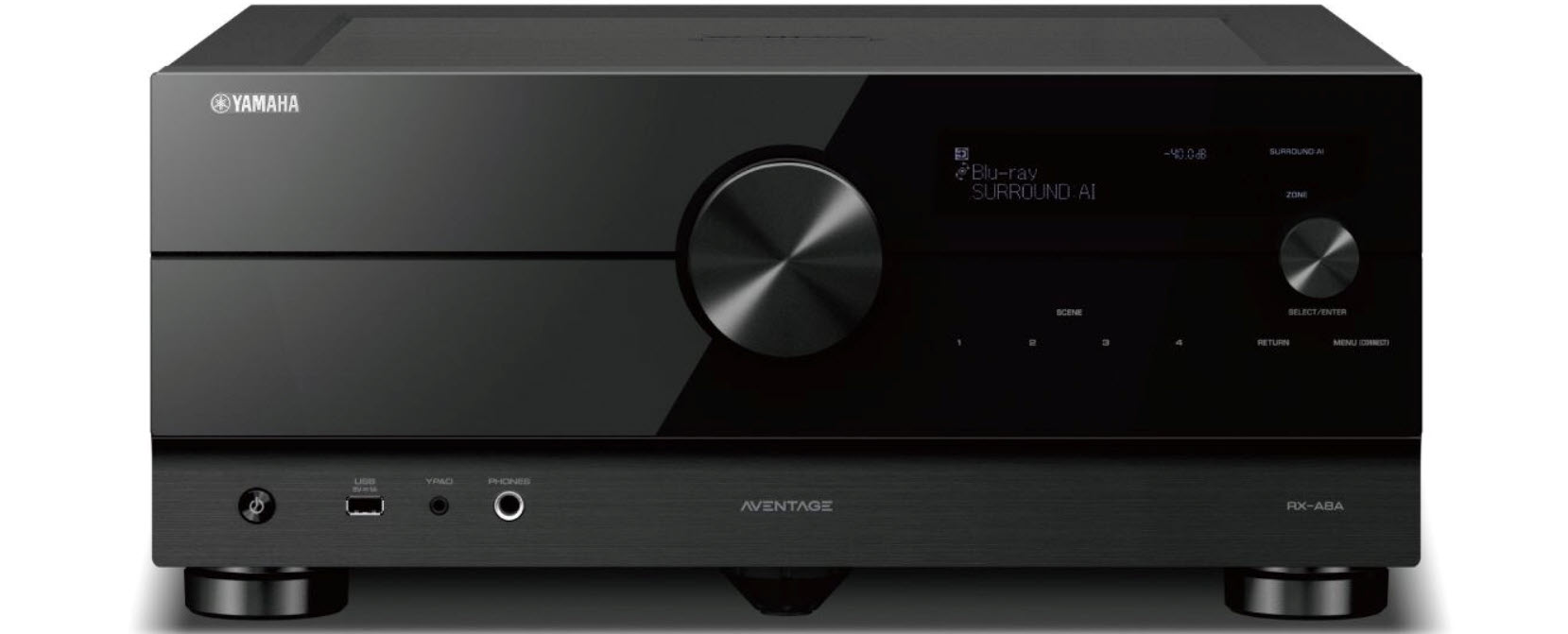
Don’t Touch that Dial
Audio engineers use audio compression to control dynamic range in the music production process. A compressor reduces the peaks of the signal, thus lowering the dynamic range and making it possible to turn up the entire song without peaks causing distortion.

One reason for reducing the dynamic range in recorded music is that it’s frequently listened to in noisy environments like cars. A car on the highway can have a noise level of almost 70 dBA (dBA is a weighted scale that accounts for how humans hear different frequencies at varying volumes). If a song varies too much from loud to soft, you’ll have to keep adjusting the volume of your automotive sound system. During soft parts, you’ll want to turn it up to hear it over the road and wind noise, but then it would be uncomfortably loud during the louder parts. Judicious use of compression solves the problem.
Loud vs. Louder
Before the rise of streaming services for music delivery — back when the CD was still the dominant format — the world of popular music experienced what was referred to as the “loudness wars.” To make their music stand out on the radio or a club sound system (as compared to other tracks played before and after), songs were mastered with a great deal of compression so as to get their average levels as high as possible.
The unintended consequence was that the dynamic range of those recordings got smaller, making the music sound squashed, less punchy and often fatiguing to the ears. In those days, it wasn’t uncommon for songs to have a dynamic range of only 4 dB to 6 dB. Metallica’s 2008 Death Magnetic album was one of the most heavily compressed, and therefore controversial, releases of the “loudness war” era.
The screenshot below shows the waveforms (recorded off TIDAL) for Edvard Grieg’s “In the Hall of the Mountain King” (the area on the left) and Metallica’s “My Apocalypse” from Death Magnetic (the area on the right). Notice how much more dynamic range there is in “In the Hall of the Mountain King.”
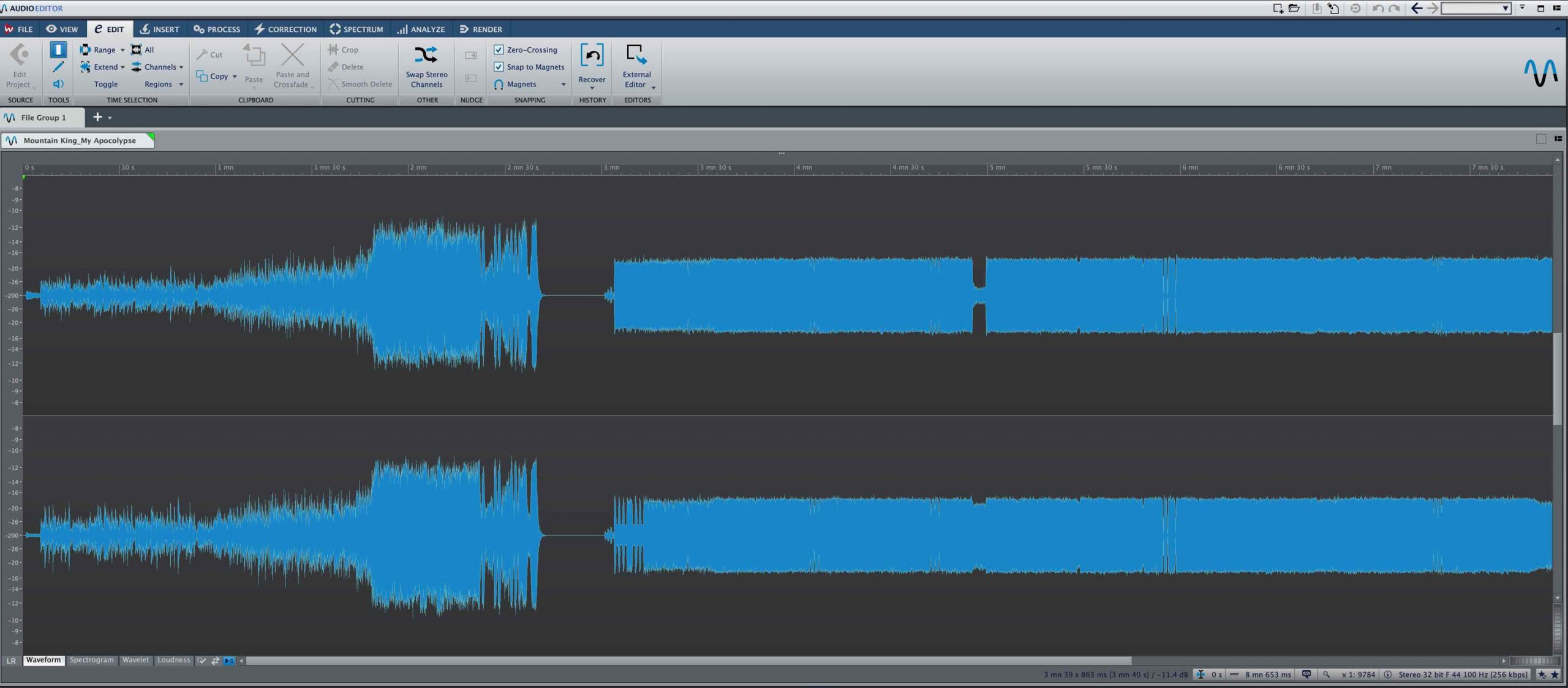
Fortunately, streaming services introduced a feature called Loudness Normalization, which automatically puts a ceiling on a song’s loudness; no matter how loud a recording is, it will get automatically turned down so that it does not exceed this ceiling. As a result, when mastering for streaming, engineers no longer feel the need to reduce dynamic range to make songs louder. That has resulted in higher dynamic ranges in popular music, which are now in the 10 dB range, on average. That’s still pretty narrow, but things are improving and hopefully the era of squashing the life out of music is mostly over.
Click here for more information about Yamaha AVENTAGE receivers.













